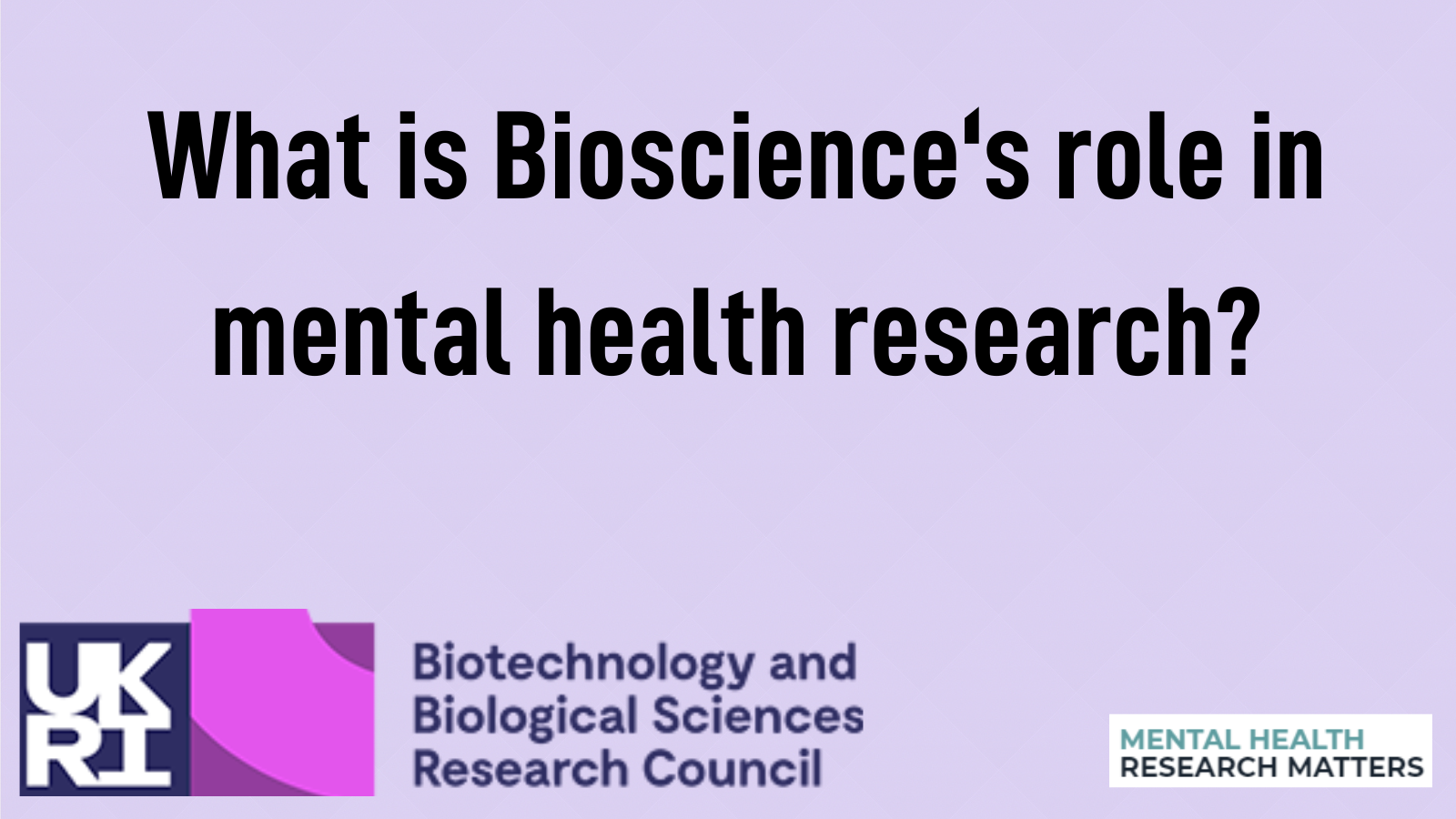
Once the territory of psychology and psychiatry alone, it is now widely accepted that much more holistic approaches are required to understand the nature of mental health and its associated problems.
Biology underpins the functioning of the human body and, whilst often overlooked, is also an integral part of understanding mental health. To truly understand mental ill health, we therefore need first to understand – biologically – what a healthy baseline might look like. This is where the biological sciences can make a substantial contribution.
In this blog, bioscience researchers Professors Adrian Harwood and Louise Dye tell us about recent advances in the biosciences, and what these mean for mental health research.
What can biological sciences contribute?
As new opportunities in mental health research arise across a number of research disciplines, it is now becoming apparent that the biosciences have a major part to play. Through developing an integrated understanding of how the underlying systems (biological, psychological and sociological) interact – and how this impacts the wider spectrum of how people think, feel and act in their everyday lives – the biosciences are well positioned to provide a new and unique perspective on mental health.
Recent advances in bioscience capabilities and technologies are beginning to shine a light – quite literally in some cases – on the complex neurobiology of mental health and disorder [1]. These developments have opened up a series of exciting, interdisciplinary research opportunities with the potential to enhance our shared understanding of mental health and underpin the next generation of therapeutic approaches.
Increasing understanding
For example, animal studies have shown that psychological stress can impact the composition of the gut microflora which is in turn associated with behavioural indications of anxiety. Similar findings have been observed in humans too – with more volatile communities of gut micro-organisms being associated with exam related stress and cortisol responses.
But until recently, true understanding of the causal mechanisms underpinning these associations has remained out of reach. It has also been difficult to find meaningful ways of applying this emerging knowledge from basic science research labs to make a real difference in people’s lives. This is now beginning to change, and the opportunities are immense.
For instance, new research with animals has demonstrated that by changing the composition of the gut microflora experimentally, vulnerability and resilience to stress can be altered. This raises the fascinating possibility that stress related psychopathologies could be treated via dietary interventions, as just one example. Perhaps something as simple as drinking a probiotic drink each day could change a person’s vulnerability to stress.
As our understanding of basic biology develops, more and more of these promising insights are being implemented in human clinical trials, paving the way for a range of novel therapeutic solutions for various mental disorders.
Preventative application
Bioscience also offers the potential to find new ways to boost human resilience and help prevent the mounting burden of mental disorders [2].
For instance, animal studies have found that moderate levels of stress in early life can lead to better adaptation to severe stress in later life, unlike early exposure to either very minor or very severe stress exposure. This “steeling effect” has also been found in human studies where a moderate degree of childhood stress can enhance resilience[3]. The implication is that the body is physiologically sensitized by a certain amount of trauma – but not too much – alluding to the phrase “what doesn’t kill you makes you stronger”. Having a deep understanding of the biology of this response opens the door to a range of preventative interventions that could be introduced in childhood and adolescence, years or even decades prior to the onset of symptoms of stress-related problems such as anxiety and depression.
This research approach is just one of many that offers a more integrated view of mental health linking social, environmental and biological influences. Most importantly, the biological approach allows us to identify causal biological mechanisms that will lead to a better understanding of these important processes that underpin mental well-being.
What needs to happen from here?
The key challenge is to develop a broader perspective on mental health. Mental health researchers generally agree that in order for progress to be made, there is a need to transcend traditional disciplinary boundaries and integrate knowledge in a holistic approach that appreciates the complex and dynamic nature of the individual and the environment in which they exist. This is where the biological sciences can play an influential role.
Whilst this is undoubtedly a daunting task [4], there are many cutting edge bioscience examples that are making real progress. As an example, three-dimensional brain organoids derived from human stem cells are already enabling researchers to trace the developmental origins of autism and schizophrenia over time in human tissues [5].
It is vital to embrace the complex biology that underlies the variability of mental health that we see in different people, and this is something which cannot be resolved by isolated approaches or by singular disciplines. Establishing a circular dialogue across all levels of study from lab to patient provides the greatest opportunity for us to close the translational gap between basic science and clinical practice in the context of mental health research [6].
Harnessing these capabilities as part of a concerted interdisciplinary effort therefore will help the research community to rise to the global challenge that mental health and ill-health presents. We now have a huge range of new technologies and computational approaches that coalesce with an emerging broader biological perspective on brain function and well-being. Taken together, this offers an exciting route to a revolution in our understanding of good mental health.
[1] Kas et al. (2019). A quantitative approach to neuropsychiatry: The why and the how. Neuroscience & Biobehavioral Reviews, 97, 3-9.
[2] World Health Organization. (2020). Mental health matters. The Lancet – Global Health, 8(11), e1352.
[3] Rutter, M. (2012). Resilience as a dynamic concept. Development & Psychopathology, 24, 335-344.
[4] Hyman. (2018). The daunting polygenicity of mental illness: making a new map. Philosophical Transactions of the Royal Society B, 373, 20170031.
[5] St Clair and Johnstone. (2018). Using mouse transgenic and human stem cell technologies to model genetic
mutations associated with schizophrenia and autism. Philosophical Transactions of the Royal Society B, 373, 20170037.
[6] Milton and Holmes. (2018). Of mice and mental health: facilitating dialogue and seeing further. Philosophical Transactions of the Royal Society B, 373: 20170022.
Listen to this piece’s accompanying podcast, with Dr Sadhana Sharma and Dr Iain Templeton from the BBSRC, here.
